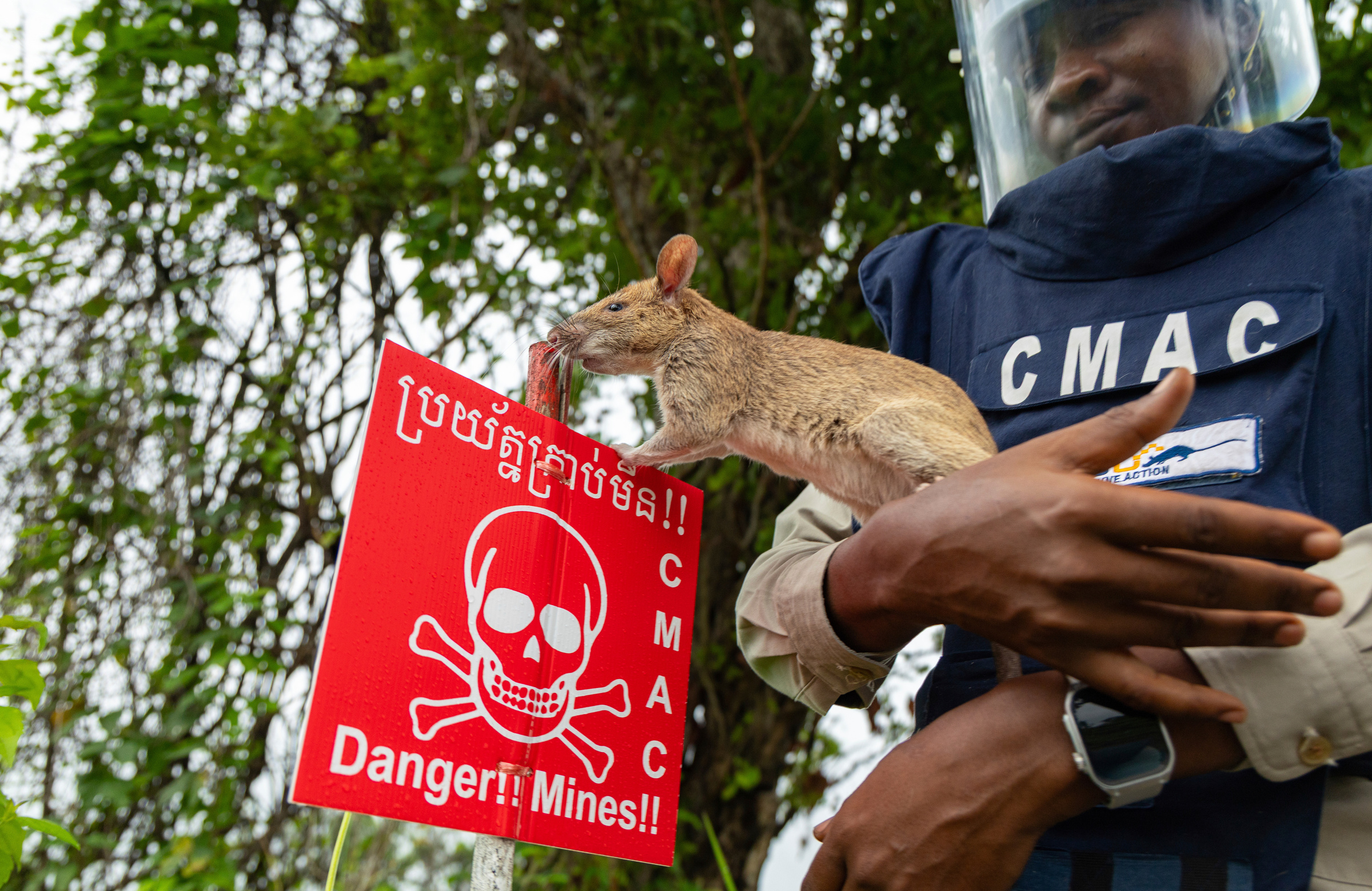 |
The humanitarian landmine removal organization APOPO in Cambodia is using African giant pouched rats to detect TNT, a common component in many landmines and unexploded ordnance remaining in the country.
These rats, scientifically known as Cricetomys Gambianus, typically weigh around 1.5 kg and can grow up to 45 cm long. They have a keen sense of smell and the ability to navigate various terrains.
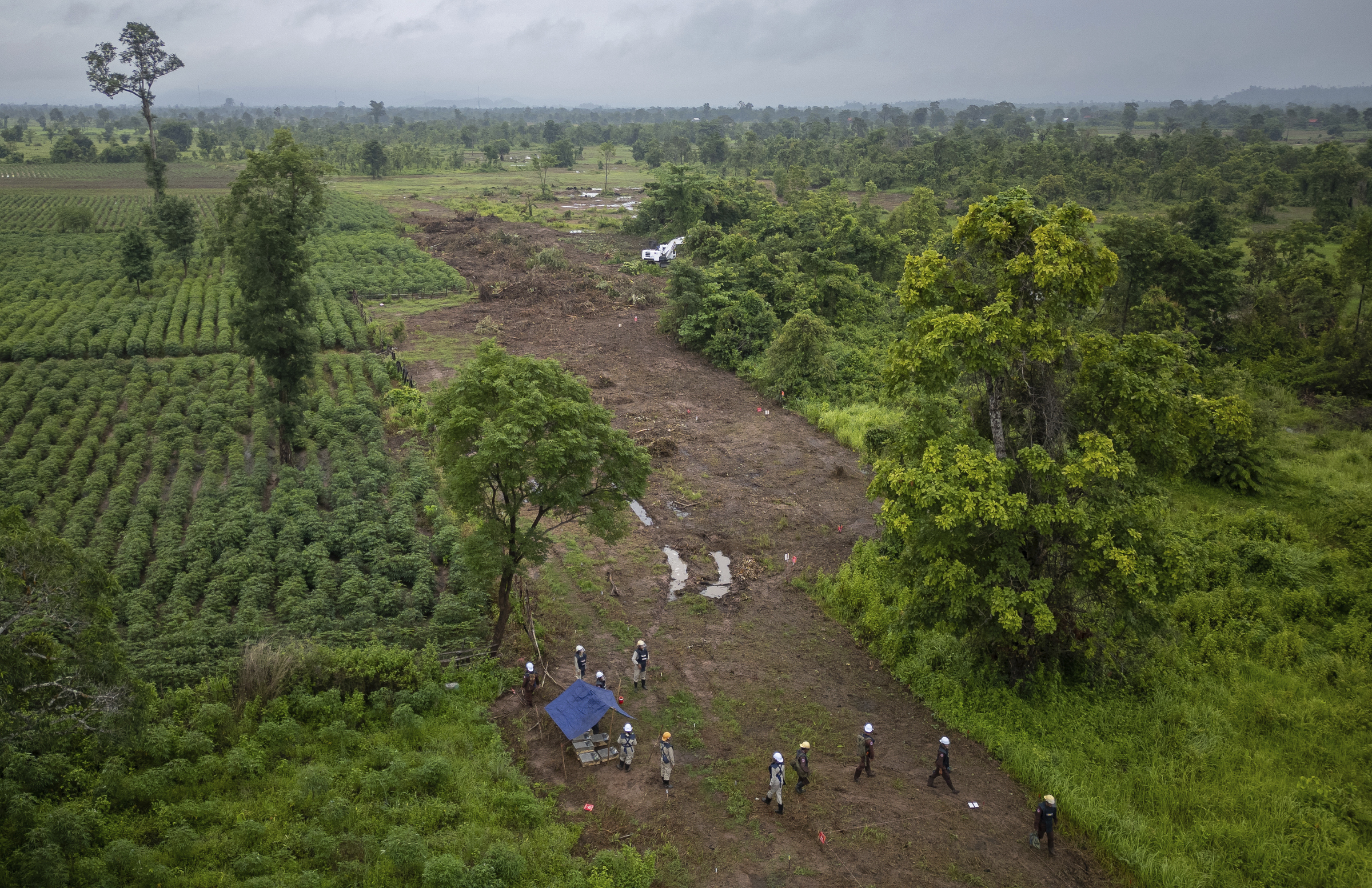 |
APOPO's demining team works in Siem Reap, northwestern Cambodia, in June.
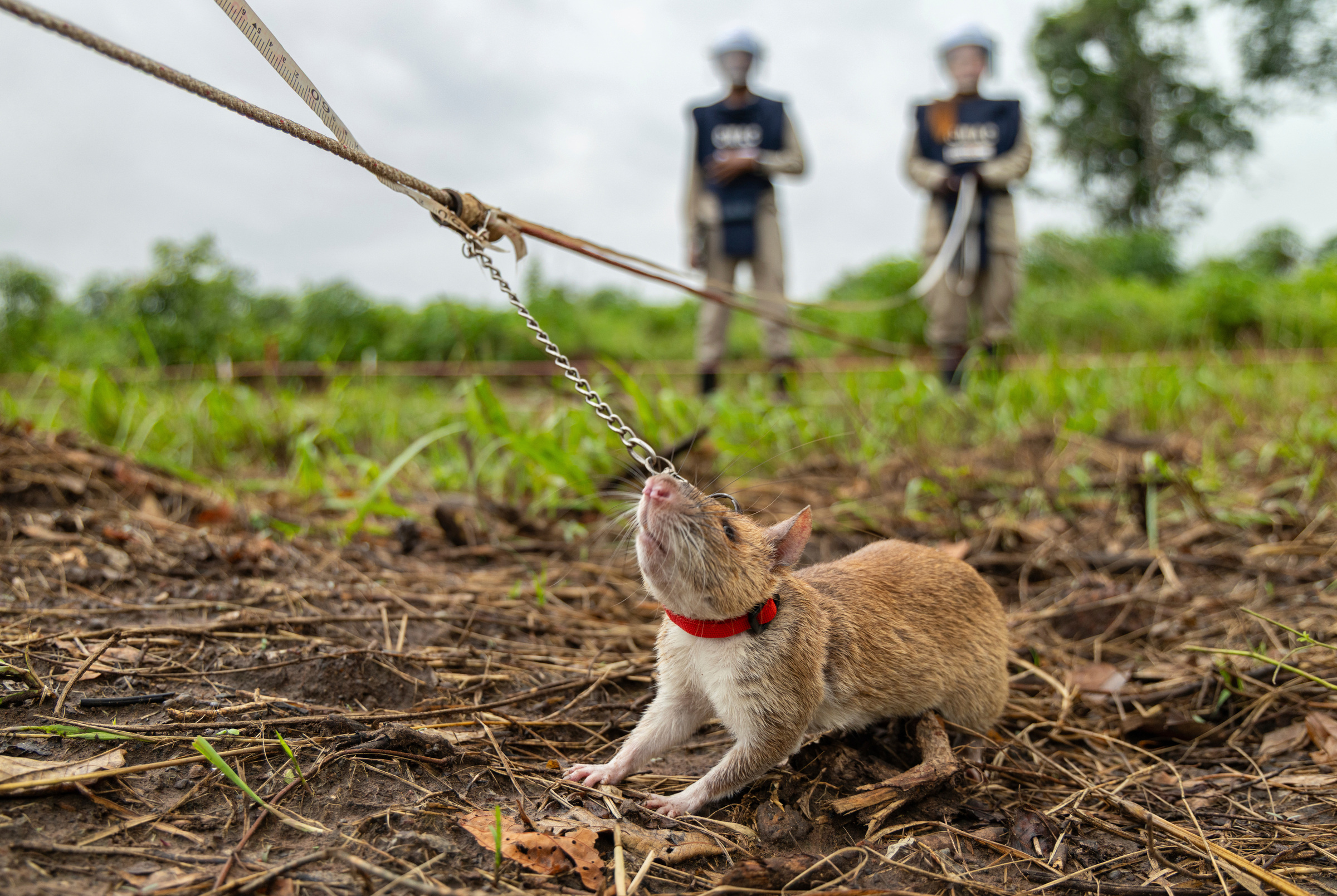 |
"When I go out into the field with these rats, I always find explosives. They have never missed any," said Mott Sreymom, a rat trainer with APOPO. "I have great faith in my mine-detection rats."
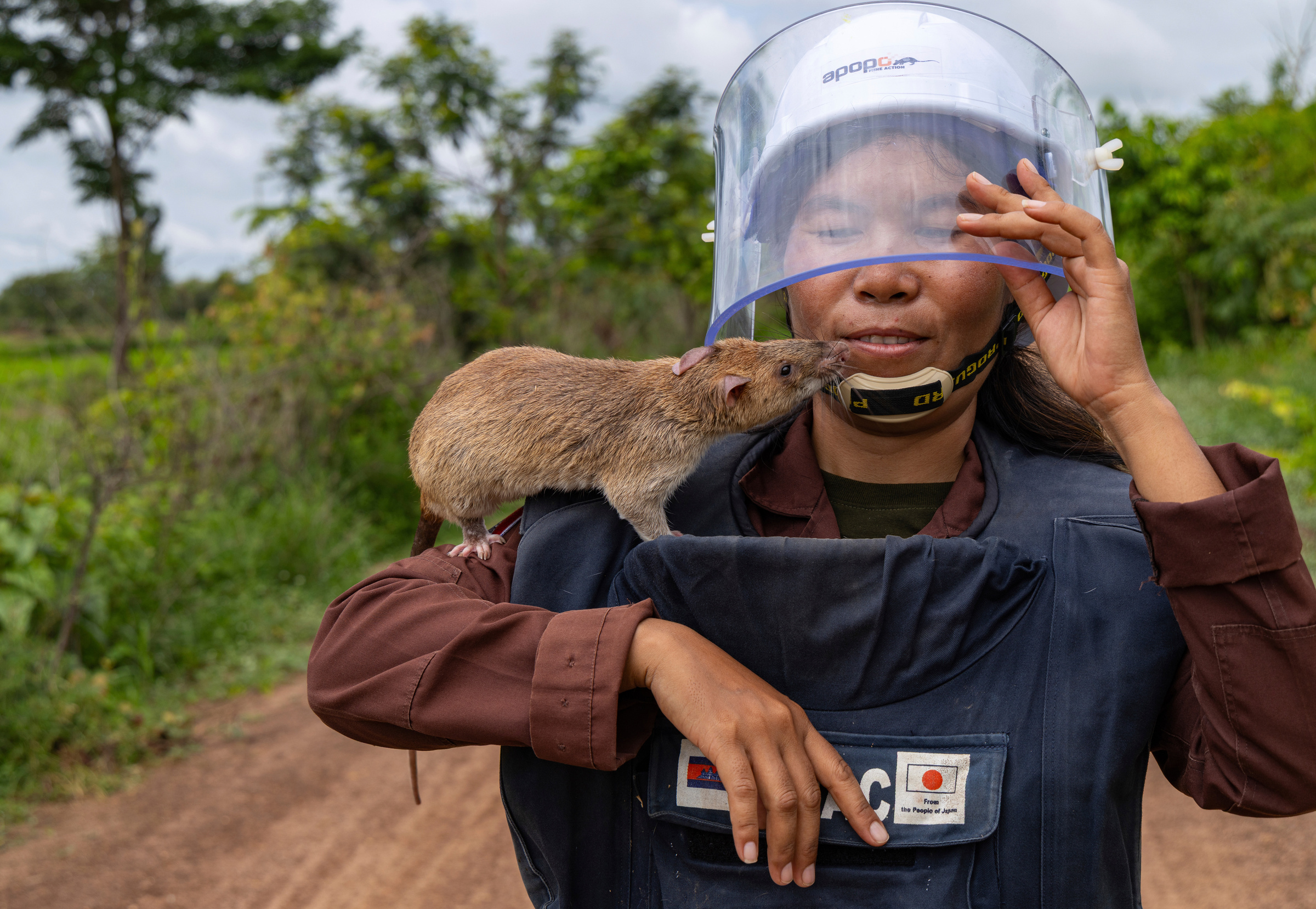 |
Mott Sreymom, 34, with her team's "hero rat" during a site inspection in Siem Reap.
 |
According to a 2004 survey by the Cambodian Mine Action and Victim Assistance Authority (CMAA), approximately 4,500 km2 of land in Cambodia is contaminated with landmines, unexploded ordnance, and other explosives.
At that time, all 25 provinces reported areas contaminated with explosive remnants of war, affecting nearly 50% of the country's 14,000 villages.
Following extensive efforts to address the aftermath of the war, the CMAA reported in 2018 that the area of land contaminated with landmines and explosives in the country had been reduced to approximately 1,970 km2.
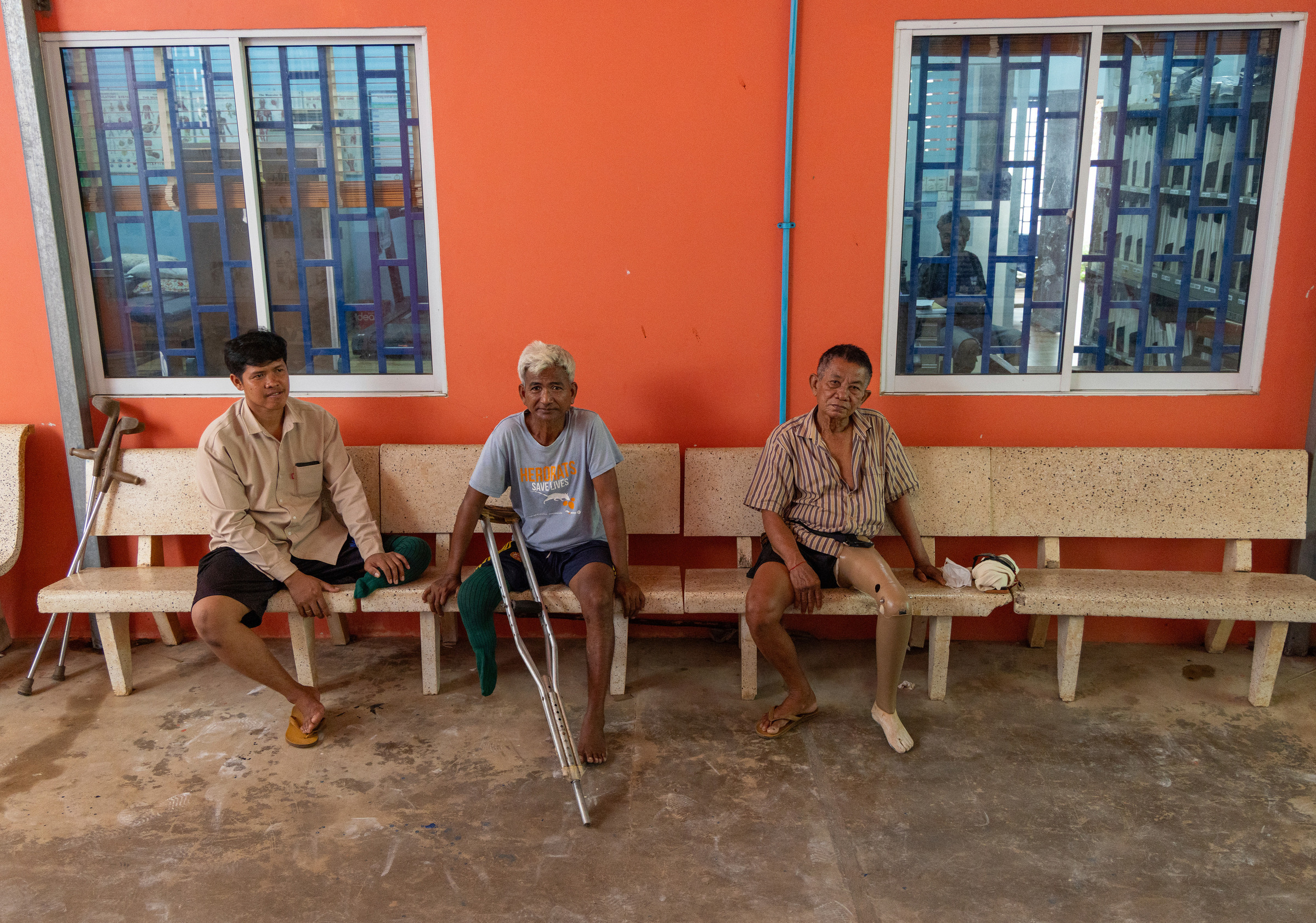 |
People with disabilities caused by landmine explosions receive treatment at the Siem Reap Rehabilitation Center.
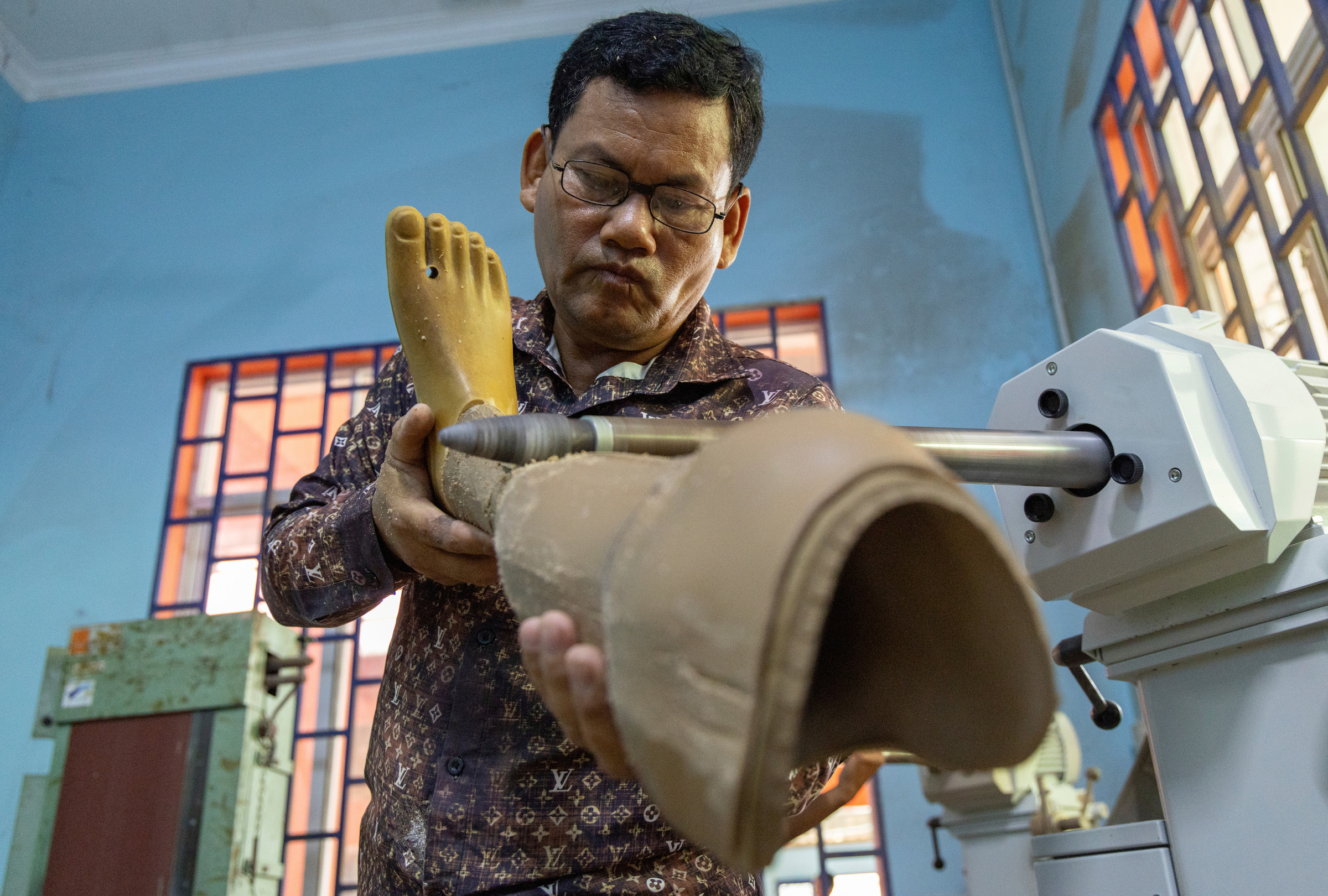 |
Chan Vannak, 51, a technician at the Siem Reap Rehabilitation Center, refines a prosthetic leg using specialized equipment for victims.
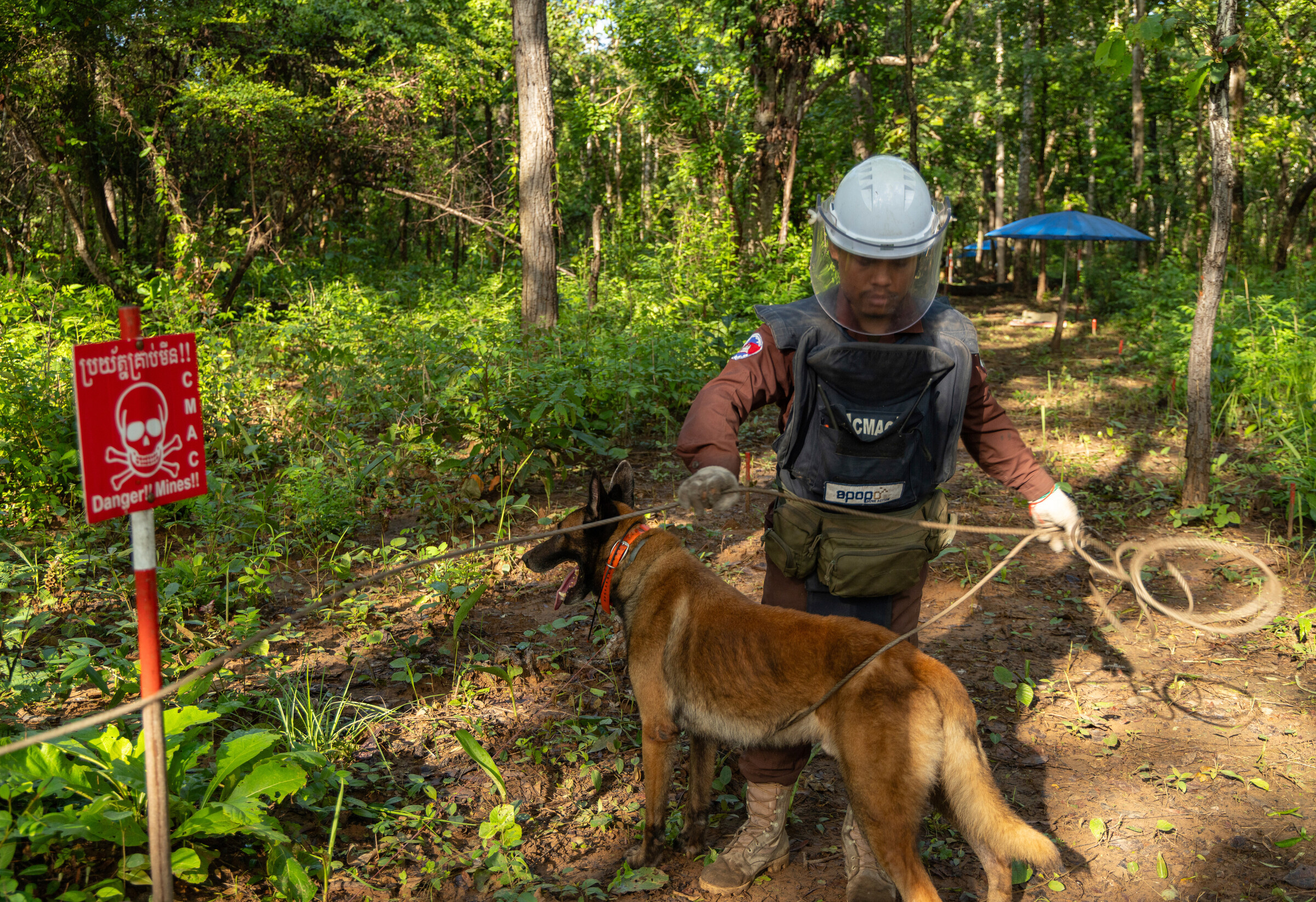 |
Bunn Viseth, 25, and his 5-year-old detection dog, Kim, work in a restricted area to clear landmines in Preah Vihear, northern Cambodia. In addition to rats, APOPO also uses detection dogs to search for explosives.
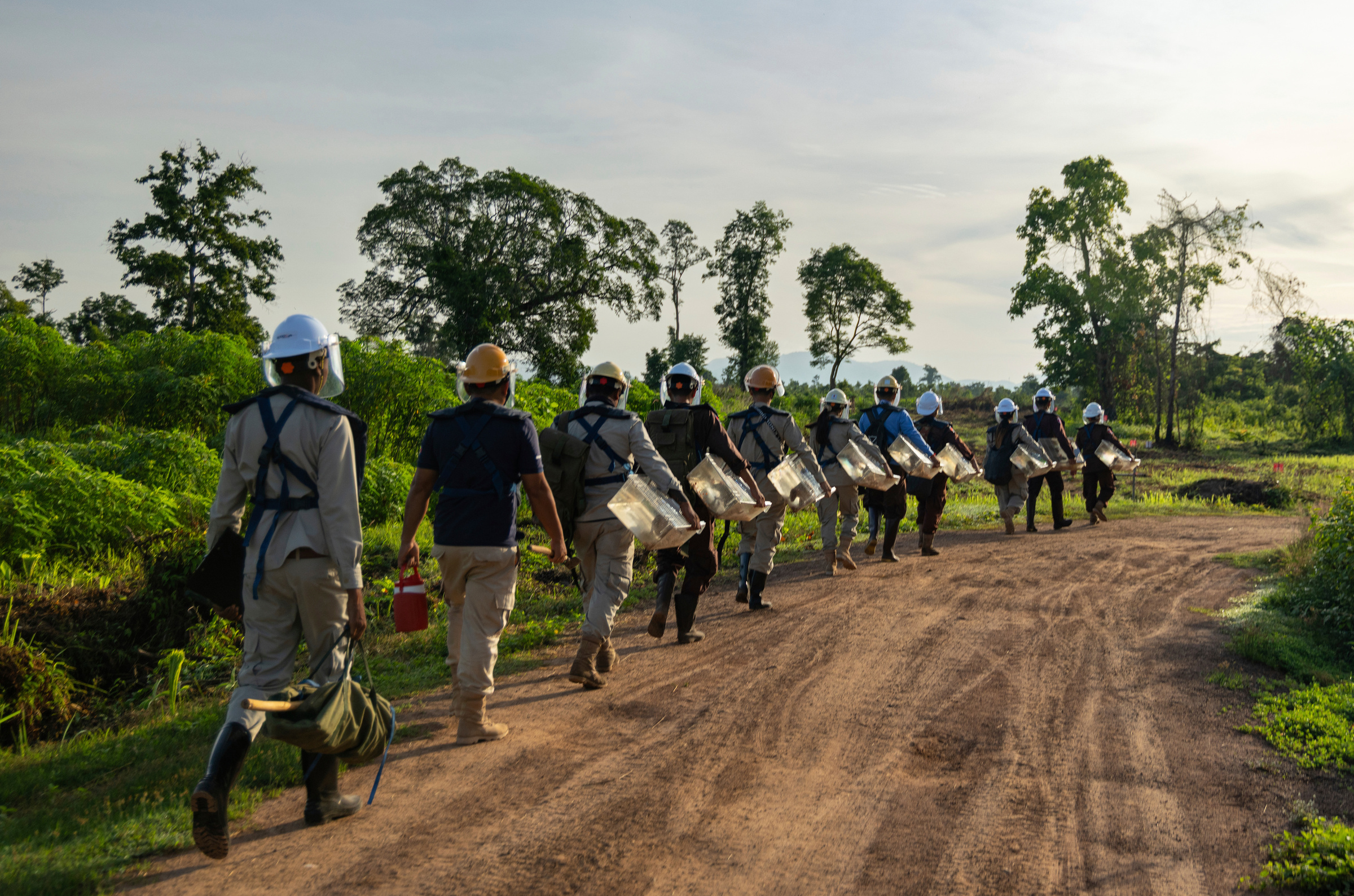 |
Since Cambodia began demining operations in 1992, over 1.1 million landmines and about 2.9 million pieces of unexploded ordnance have been cleared, according to the government's 2022 progress report.
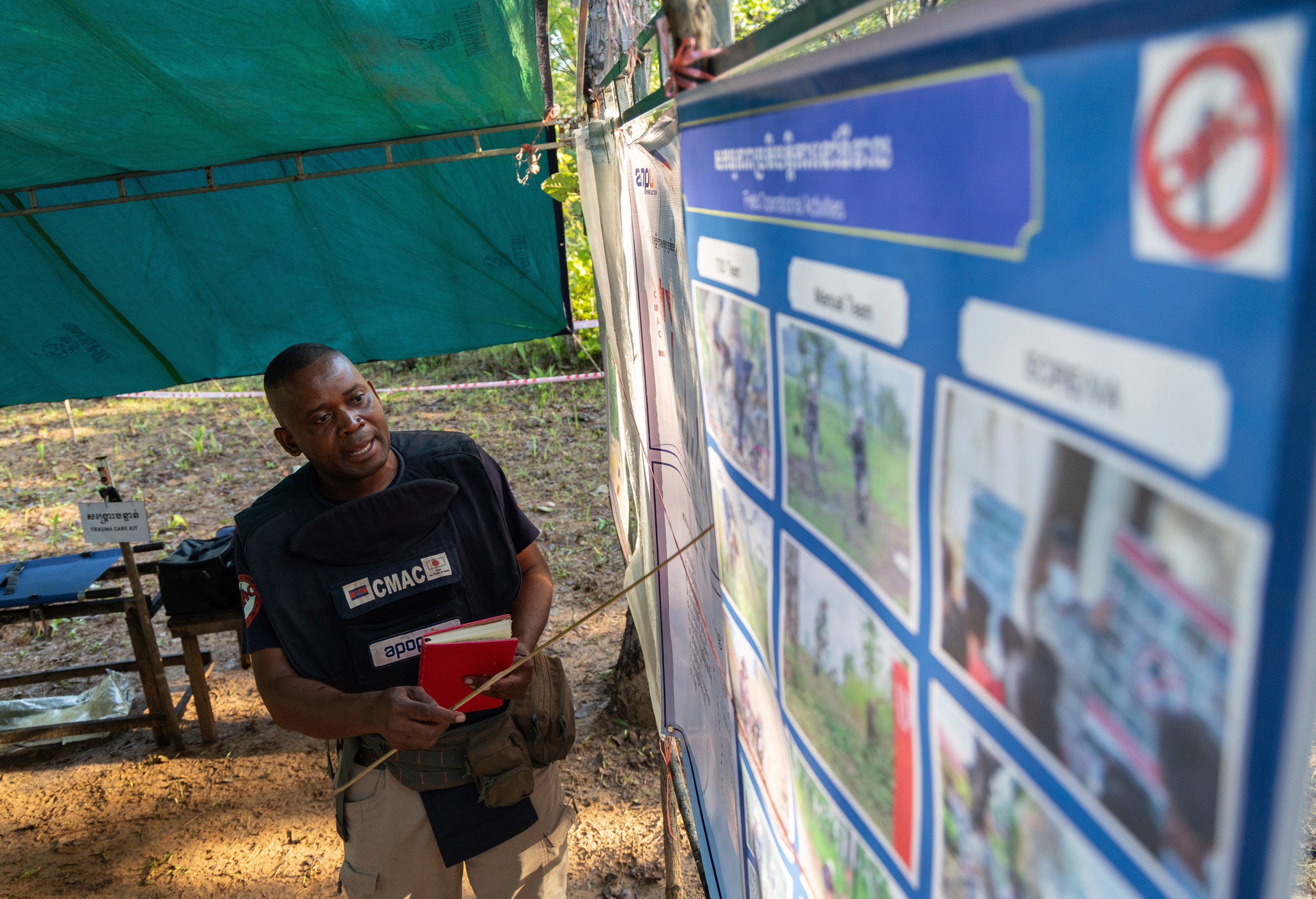 |
"Dogs and rats are more effective than other animals because they can be easily trained," said Alberto Zacarias, a field supervisor for APOPO's dog mine detection team.
He added that these two species are also friendly to humans and respond quickly to commands from trainers, making them popular with many demining organizations.
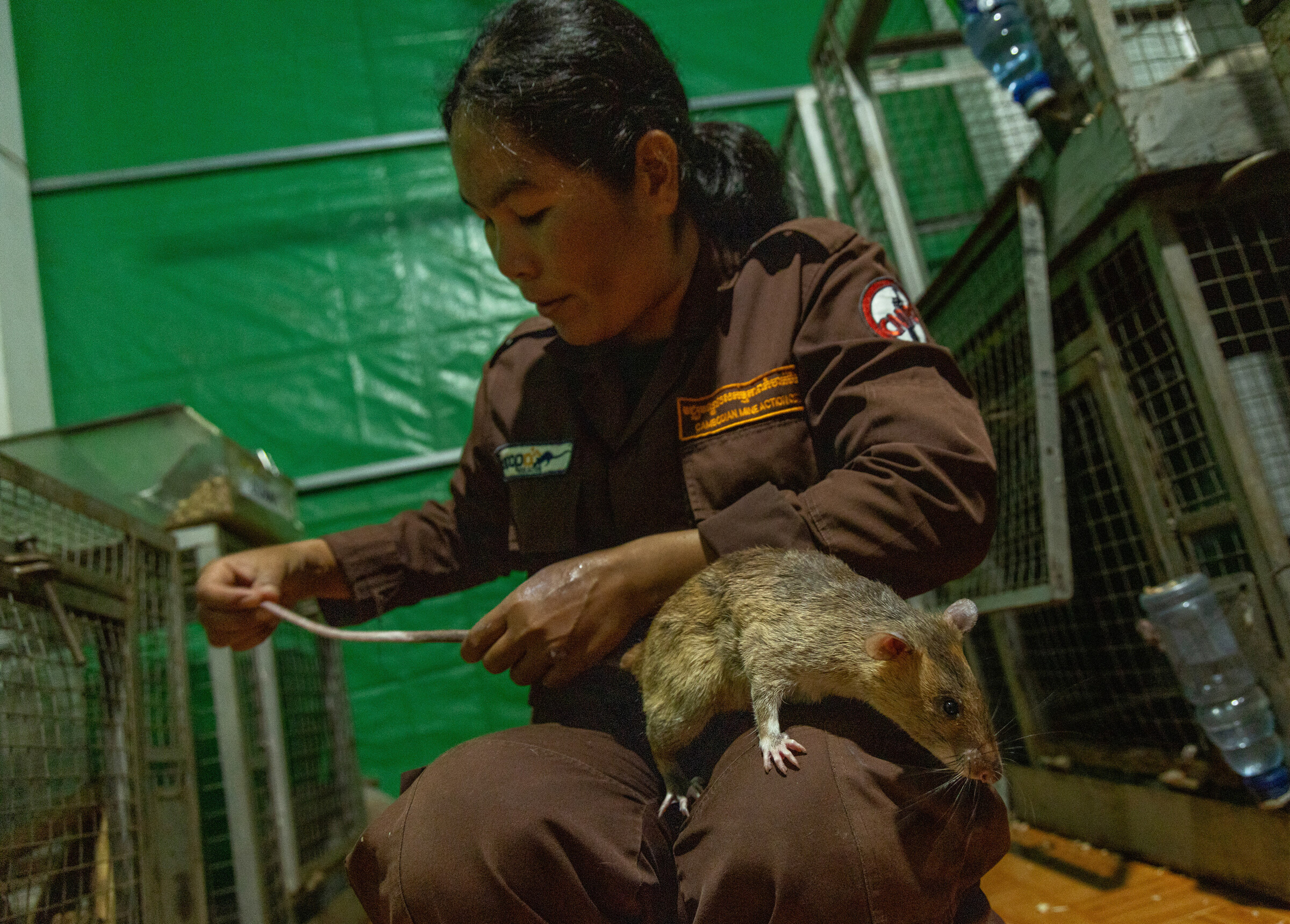 |
"We work with them almost every day, so we are increasingly attached. They are very friendly, not afraid or running around. I consider them family," said Mott Sreymom.
Photo: AP












